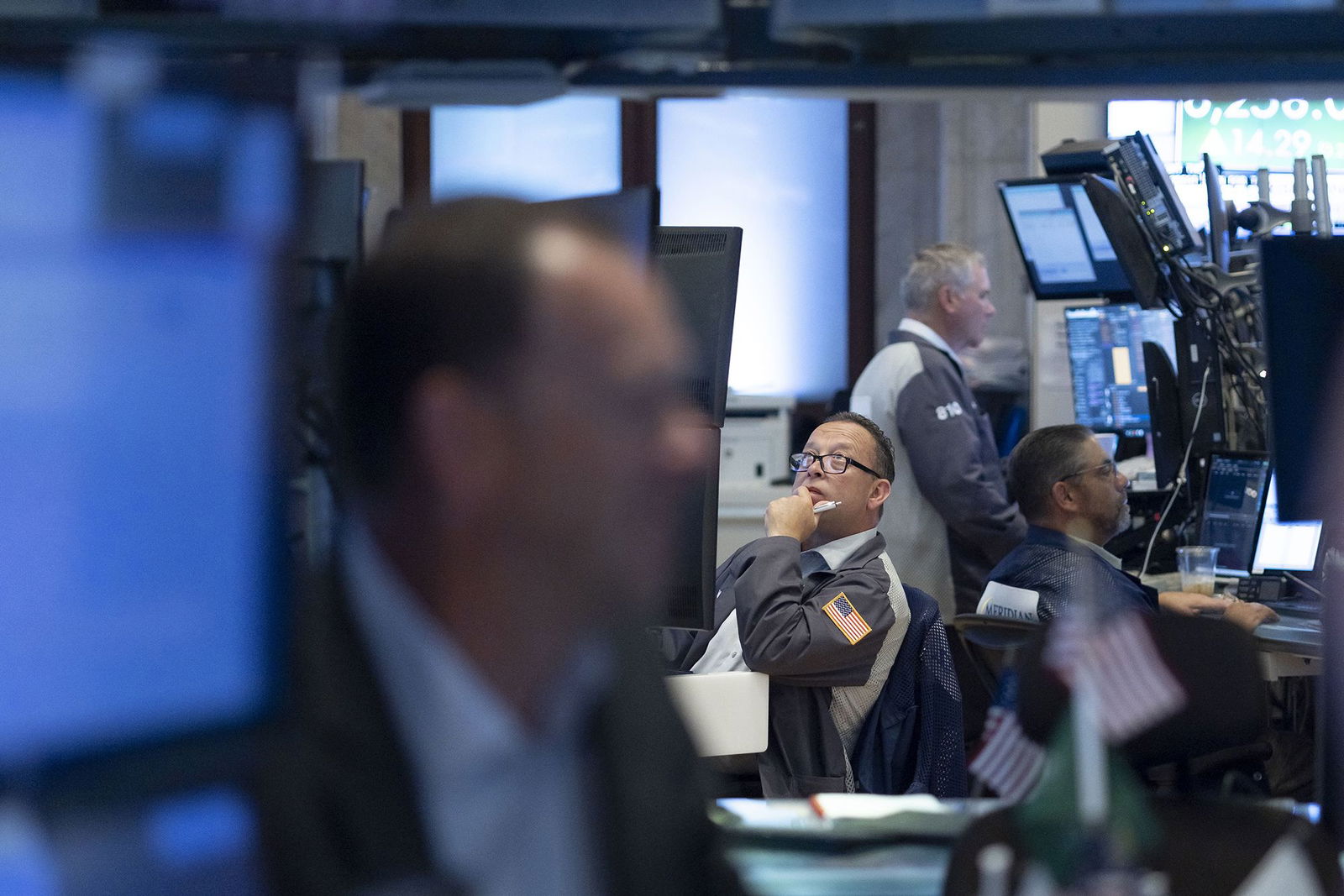Stocks close mixed as Dow just misses a record high

The Dow Jones Industrial Average is on track to hit its first record high of the year.
By John Towfighi, CNN
New York (CNN) — An early rally faded on Friday and the Dow just missed out on closing at its first record high of the year.
US stocks were mixed on Friday. The Dow closed higher by 35 points, or 0.08%. Meanwhile, the S&P 500 fell 0.29% and the tech-heavy Nasdaq Composite fell 0.4%.
The Dow had opened in record territory, surpassing its previous intraday record high set on December 4, before fluctuating. The Dow needed to finish the day with a gain of roughly 103 points, or 0.23%, to officially close at a record high.
The Dow now needs a gain of roughly 68 points, or 0.15%, to close at an all-time high.
Wall Street has maintained optimism despite signs of underlying turbulence in the economy, but market momentum petered out to end the week. The three major stock indexes still posted back-to-back weeks of gains.
Stocks came under pressure Friday morning after the University of Michigan’s latest survey of consumers showed sentiment fell 5% in August and declined for the first time in four months due to worries about inflation.
The Dow tried to climb higher as shares in UnitedHealth (UNH) — a significant component of the Dow — jumped 12%. Berkshire Hathaway (BRK.B) on Thursday afternoon revealed a stake in the health care giant, sending its shares higher after the closing bell. UnitedHealth shares are down 40% this year.
While the S&P 500 and Nasdaq have notched 18 and 19 record highs this year, respectively, the Dow is still chasing its first closing record milestone. Hopes of a Federal Reserve rate cut next month have boosted stocks in recent weeks.
It’s still been a remarkable rebound for the Dow, which has surged roughly 20% since hitting a low point in early April.
The search continues
The Dow in recent weeks has flirted with closing at a record high as investors have tried to look past concerns about President Donald Trump’s tariffs, despite signs of the trade policy boosting certain prices.
The market has been buoyed by a strong corporate earnings season and undeterred investor enthusiasm about AI.
Stocks soared earlier this week after Consumer Price Index data for July showed headline annual inflation rose in line with expectations, cooling Wall Street’s nerves and boosting arguments that the Fed will cut interest rates in September.
The Dow surged 947 points, or 2.15%, across Tuesday and Wednesday. The S&P 500 and Nasdaq hit back-to-back record highs.
“For investors, the fear was that an even hotter number would remove the prospect of a September rate cut altogether, particularly if the tariff impact became more obvious,” analysts at Deutsche Bank said in a Tuesday note. “So the fact that CPI was broadly as expected was met with relief.”
Yet the stock market rally was put on pause on Thursday after Producer Price Index data for July showed that wholesale inflation rose at its fastest monthly pace in three years.
The faster-than-expected rise in producer prices dented hopes for certainty about Fed rate cuts in September, and sent stocks lower. But investors shook off worries in the afternoon and stocks closed flat.
Traders on Wednesday had begun fully penciling in a Fed rate cut in September, according to the CME FedWatch tool. Traders on Thursday dialed back those expectations and began pricing in a 7% chance the Fed holds rates steady.
“Thursday’s PPI was much stronger-than-expected and suggests that tariffs are causing inflation which adds lots of complexity to the Federal Reserve’s potential rate cut plans this fall,” Clark Geranen, chief market strategist at CalBay Investments, said in emailed commentary.
While uncertainty looms over the economy, stock market investors for now are embracing enthusiasm about robust corporate earnings and the prospect of a potential Fed rate-cutting cycle.
The Fed cutting its benchmark interest rate is often seen as fuel for stocks to climb higher. A rate cut can lower bond yields, making higher-yielding assets like stocks more appealing for investors. It can also lower savings rates, encouraging spending and investing.
Meanwhile, volatility in the market has dissipated. Wall Street’s fear gauge, the CBOE Volatility Index, this week hit its lowest level this year.
“We just got through earnings season with good earnings, a Fed that’s about to embark on a cutting cycle and Trump doing micro-level disruptive things but not macro-level disruptive things,” said Scott Ladner, chief investment officer at Horizon Investments.
“We don’t see a whole lot of massive headwinds,” Ladner said.
A remarkable recovery
It’s been a whirlwind year for the US stock market.
The Dow in early April had dropped 16% from its previous December peak. The blue-chip index was on track for its worst April decline since 1932 before Trump paused his initial “Liberation Day” tariffs, swiftly lifting stocks out of their slump.
The S&P and Nasdaq hit record highs on June 27 and have since climbed further into record high territory.
It’s been a long journey for the Dow that is still ongoing. The index on July 23 closed just four points shy of a record high before pulling back the next day.
The Dow has been previously weighed down by UnitedHealth (UNH), Salesforce (CRM), Merck (MRK) and Apple (AAPL), which are down roughly 40%, 27%, 15% and 8%, respectively, this year.
Meanwhile, the best performing companies in the Dow have been Nvidia (NVDA), Boeing (BA), Goldman Sachs (GS) and Microsoft (MSFT), which are up 34%, 33%, 28% and 23%, respectively, this year.
Nvidia was added to the index in November, replacing Intel (INTC).
The Dow Jones Industrial Average
The Dow — officially the Dow Jones Industrial Average — has been around since 1896. The index initially included 12 companies before expanding to 30 companies in 1928.
For the past 97 years, different companies have rotated into the 30-company index, reflecting the evolving nature of the US economy.
In comparison, the S&P 500 — the other benchmark US stock index — tracks 500 companies.
While the Dow provides less of a scope of the market than the broader S&P 500, it’s an iconic symbol of the US stock market, according to Sam Stovall, chief investment strategist at CFRA Research.
“It is the sentimental favorite because it is the oldest,” Stovall said. “More people have been familiar with it.”
The S&P 500 was established in 1957 (though precursors of the index existed in different forms since the 1920s). The tech-heavy Nasdaq Composite was established in 1971.
Stovall said people are often aware of the “Dow” as being identifiable with the US stock market and Wall Street while the S&P 500 can be less well-known.
While the Dow has yet to clinch a closing record high this year, it wasn’t just the S&P 500 and Nasdaq that hit all-time highs this week. Japan’s Nikkei 225 clinched an all-time high this week, while the MSCI all-country world index — tracking shares across the globe — also hit a fresh record high.
The-CNN-Wire
™ & © 2025 Cable News Network, Inc., a Warner Bros. Discovery Company. All rights reserved.



